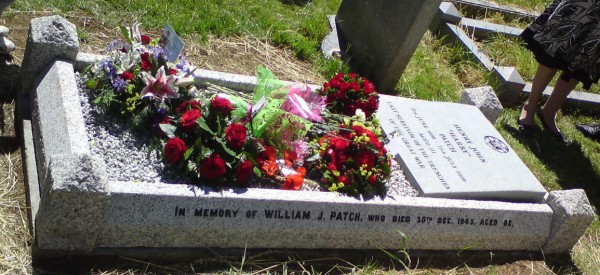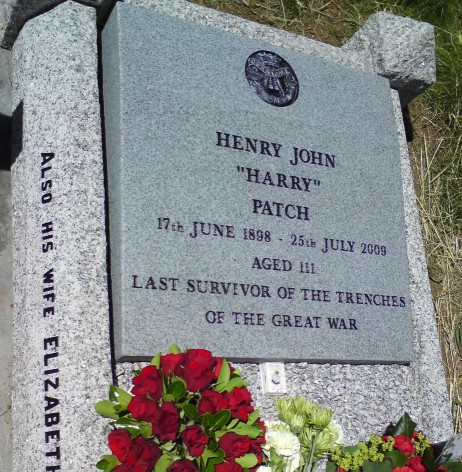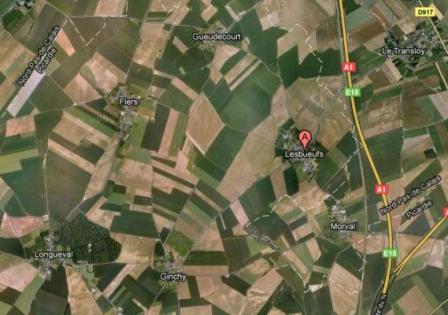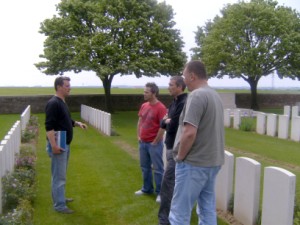Archive for June, 2010
Tunnellers Memorial Unveiling Ceremony – 19 June 2010
A quick report on the terrific day for the unveiling of the Tunnellers Memorial at Givenchy-Lez-La Bassée. Well, where to start?! Firsty, many thanks to all who attended including friends and family plus representatives from the Historial at Peronne, Durand Group and Brian Owen from the Royal Welsh Fusiliers Museum plus many tunneller’s relatives. The weather certainly did its best to dampen the day but everyone battled on until the sun finally came out.
The Territorial band of the Royal Engineers played and marched for twenty minutes along the streets of Givenchy with locals and schoolchildren joining and following. They were then led by an honour guard from the Corps to the site selected for the speeches. Other attendees included Hackett Troop from the Royal School of Military Engineering as well as General David Bill (late RE) represented the British Army and the defence attaches of Canada and New Zealand. Veterans’ organisations from France paraded their standards along with those of the Ypres, Somme and Pas de Calais Branches of the Royal British Legion. The great nephew of Sapper William Hackett attended along with three nephews of Thomas Collins – John Abraham, John Carroll and Terry Carroll. I was especially proud to see them there after my work in tracking them down. By the time we all formed up we estimated the total attendance to be 300 – 400 people.
Speeches were made by Monsieur Jacques Herbaut, Maire de Givenchy (with translation into English provided by Mme. Tracy Bernard), General David Bill, Peter Barton and finally a reading of John French’s diary entries for the period by me. It was a very emotional moment reading these words with relatives of William Hackett and Thomas Collins standing just a few yards away.
We then all moved down to the site of the Shaftsbury buying tramadol hydrochloride Shaft where Reverend Pat Aldred conducted a blessing for Sapper William Hackett VC and Private Thomas Collins which was followed by the Last Post, two minute’s silence and the Reveille. The entire party then moved to the Memorial for the unveiling. Firstly the Exhortation was delivered by WO1 Philip Moffitt RE and then the Tunnellers Memorial was unveiled by Monsieur Jacques Herbaut, Maire de Givenchy, and Monsieur René Cuvelier, Premier Adjoint au Maire. Wreaths and tributes were laid by officials. This was followed by the playing of the Marseillaise followed by the National Anthems of Great Britain, New Zealand, Canada and Australia (all countries who had specialist Tunnelling Companies). Finally there were wreaths and tributes laid by guests.
There then followed a Vin ‘d’honneur in Givenchy’s Salle de Fete which included canapés and a couple of barrels of specially brewed “William Hackett Ale” (unfortunately run out by the time I made it to the hall).
A full write up and pictures plus video interviews with those involved will be added to the Tunnellers Memorial website in due course. In the interim, please take a look at the BBC Wales news piece by Carwyn Jones who had travelled out with the three Welsh nephews of Thomas Collins. http://news.bbc.co.uk/1/hi/wales/10371047.stm
I think it is a very fitting memorial to that special breed of men who served and fought underground with such aplomb. The information panel designed so skilfully by OMB Direct is also a great addition to the memorial site.
I can only echo countless other comments received on that day and thank Peter Barton and Maggie Lindsay Roxburgh for their vision, commitment and perseverance in erecting this long neglected memorial to the tunnellers.
Harry Patch’s new gravestone
Had Harry Patch still been living he would have celebrated his 112th birthday today. It therefore seemed apt that a short service of dedication was held this morning at his new gravestone in the beautiful surroundings of the churchyard of the Church of St. Michael and All Angels at Monkton Combe.
Along with about 20 others of friends and family I was delighted to attend and after the short service of dedication for the headstone presided over by Rev. Paul Langham we laid some flowers and chatted about our memories of Harry. He was such a part of our lives and it seemed strange in meeting up with his friends and family buy real tramadol online that he wasn’t there. Then again, as was noted by some, perhaps he was!
The gravestone is simple – no doubt just how Harry would have wanted it. Apparently his grave receives a good number of visitors and I find it tremendous that his grave (and that of his parents) is now so well marked and looked after. Well done to the wonderful David Isaacs for organising this all so well.
Whilst away for three weeks on the recent Somme archaeological dig I managed to get as many bike rides in as possible. I always try and take my road bike when I am in France for any length of time as it is such a great country to cycle in with the average Frenchman having a real respect for cyclists. Coupled with the huge open spaces, sparse population and traffic free roads, it is a cyclist paradise. On occasions I would squeeze in a quick 20 mile ride after a day on site – these rides were mainly a circle around the Peronne area. However, when time permitted I would drive up to the main British 1916 battlefield with the bike in the boot and set off from there. It would be a busy day if I saw a dozen cars per ride – the roads were delightfully quiet.
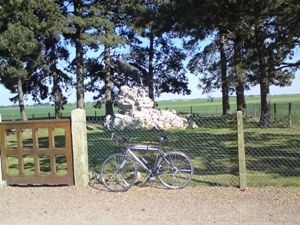
Proof that I did indeed cycle around the Somme - my bike at the Newfoundlanders Caribou Memorial at Gueudecourt
But what has any of this to do with ‘News from the Front’? Well, for one thing, I would recommend cycling the area for all the reasons outlined above but also for a real appreciation of the lie of the land. As much as I huffed and puffed up some inclines, my constant thought was that any difficulties I endured were nothing compared to those faced by the average British infantryman in 1916, weighed down with equipment on his back, buy alprazolam online overnight rifle, grenades and faced with German artillery, MG and rifle fire. The relative slow speed of cycling enables one to spot features easily missed in a car and get a greater understanding of the battlefield.
To illustrate this, whilst travelling between Ginchy and Morval I came across the following sign regarding ten new wind turbines or ‘aérogénérateurs’ in the area – a brief translation shows that they are planned for the Flers, Ginchy, Lesboeufs, Gueudecourt locality and the cut-off for public consultation is 14 June.
These will cover much of the ground fought over in the Battle of Morval (25-28 September 1916). This area of the battlefield is rarely visited, especially compared to the 1 July line. I won’t comment on whether these ‘aérogénérateurs’are a good thing or not (the jury is still out on wind-power) but am pretty sure that they will get the go-ahead as there are so many of these in this part of France. They will alter the old battlefield but at least may focus some minds on this area. One can only hope that appropriate archaeological procedures are followed when the foundations are dug. I cannot imagine that earthworks on the scale required for these turbines will not disturb numerous Great War related features, perhaps also bodies of the fallen.
I received an email from a mate of mine a few weeks ago telling me that he was planning a visit to the battlefields in late-May. He was coming with a few friends for a boy’s weekend with a bit of remembrance and battlefield touring thrown in for good measure. It so happened that they would be in Arras on the day when I was planning to return to the UK after three and a half weeks on the Somme archaeological dig with Cream Productions.
I couldn’t turn down a chance to give them a whistle-stop tour of the Arras battlefield and duly met them on the Saturday morning at Tilloy-lès-Mofflaines where I hopped in their car and gave them a running commentary around St.Laurent Blangy, Athies, Point du Jour, Fampoux, Roeux and the site of the infamous Chemical Works, Monchy-le-Preux and a walk up Infantry Hill, with a run back down the Arras-Cambrai road past Feuchy Chapel back to my car.
Whilst at Point du Jour we visited the graves of many of the Grimsby Chums (10th Lincolns) whose bodies were found in 2001 when foundations were being dug for a nearby BMW car factory. These bodies were buried with full military honours in the nearby cemetery in 2002. Sadly, positive identification of any of the remains proved impossible and all are now buried in graves marked with ‘unknown’ headstones.
One unexpected outcome of the whistle-stop tour was an answer I received to my usual question of ‘Did you have any relatives that fought in the war?’ One of the party, Rob, responded by telling me he was related to the Great War fighter ace, Albert Ball VC, DSO & Two Bars, MC. He had read about Ball’s exploits recently and this had stirred his interest in the visit. I was glad to hear that next day they all visited Ball’s grave in Annoeullin Communal Cemetery, German Extension.
So, whilst a lightning quick overview of a very small area, it was still a great way to spend a morning. It was also the first time that I had used the new Arras panorama volume on the battlefield – an mighty useful it was too! Many thanks to Rob, Chilts, Errol and of course, Pieman and his massive but silent car.






